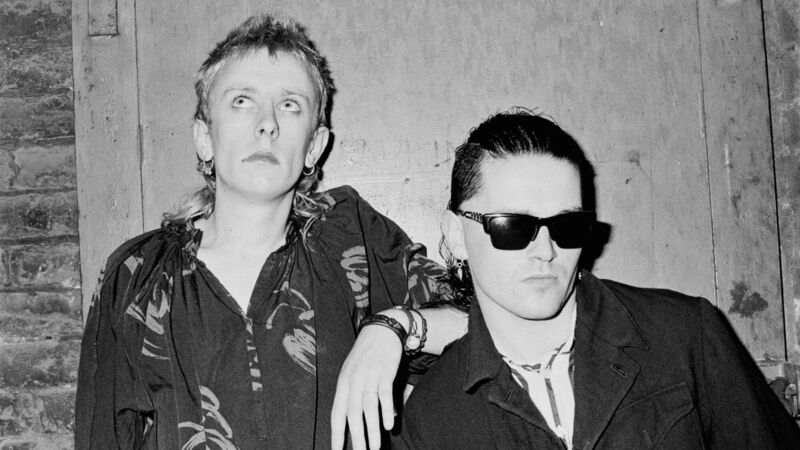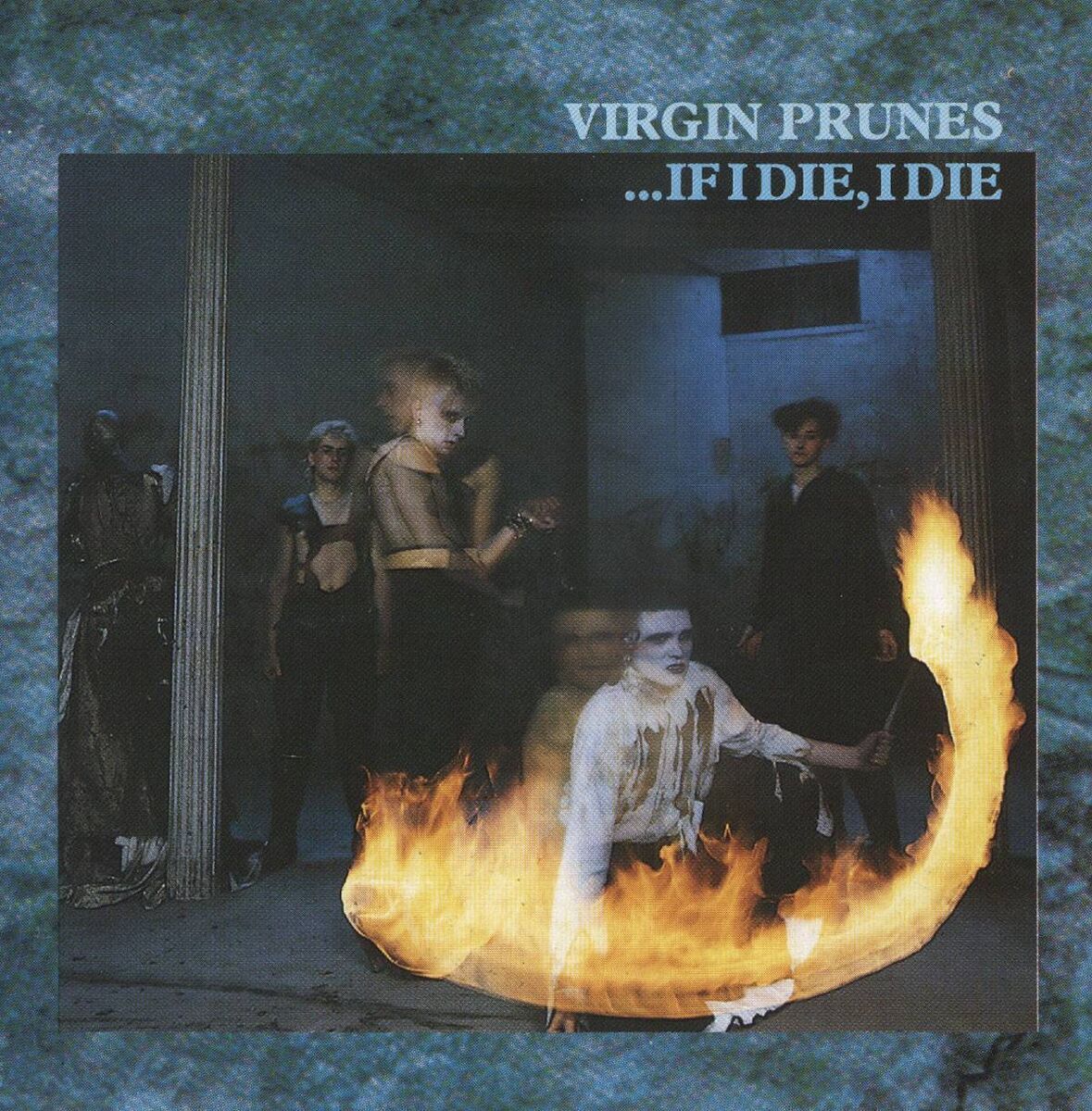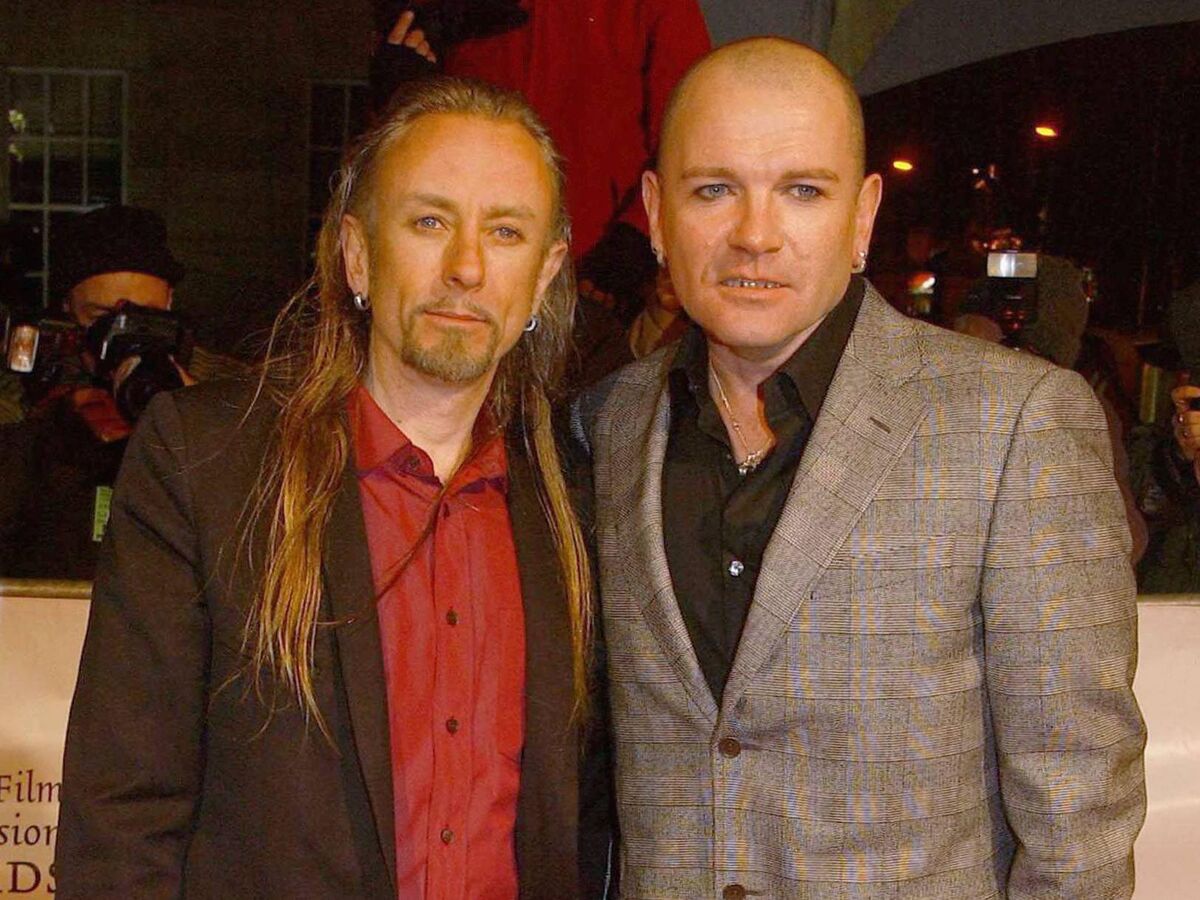Ireland in 50 Albums, No 33: If I Die, I Die by the Virgin Prunes (1982)

Guggi and Gavin Friday of Virgin Prunes, who formed in 1977. Picture: Erica Echenberg/Redferns.
A few years ago on Twitter William Tyford described witnessing a Virgin Prunes gig: “Like a load of pagans in robes stomping around.”
“Face paint, weird hair, lots of wailing,” wrote the business journalist. “I seem to remember flour being chucked about. Them, not me. Quite a performance.” Gavin Friday smiles when he hears the description. “Sounds like us,” he says.
“We were infamous for our performances and that sounds like one of the tamer ones actually. The performances were as crucial as the recordings to the band.
"Possibly performance was our real forte. We delved into lots of imagery and lots of Irish influences, pagans and druids and all that primitivism, and we took that as a very big influence in a primeval way on …If I Die, I Die.”
“You will not believe it,” laughs Friday as he suddenly remembers where the band got the pagan robes. “The Virgin Prunes in late 1981 got a gig in Maynooth College. Afterwards we were in the dressing rooms.
"We saw all these old priests’ robes and we put a load in the bag and went back to Dublin. So we were actually wearing priests’ robes. You know, the Catholic Church was the big, big ANTI for me back then.”
Virgin Prunes formed in 1977 but the band’s origins go back a few years earlier: mid-70s, Dublin’s Northside, Cedarwood Road, a group of teenagers growing up create their own sanctuary for outsiders, a secretive world that they called the Lypton Village. Fionan Hanvey became Gavin Friday, Paul Hewson became Bono, Dave Evans became The Edge and Derek Rowen became Guggi.

Early gigs were often staged in performance spaces and galleries rather than pubs and clubs.
“We had a platform within the Project Arts Centre to do what you want,” says Friday. Their live shows were legendary confrontational events: audiences were often simultaneously shocked and bemused.
At this stage, Friday fronted the band alongside Guggi and Dave-id Busaras. Strongman played bass, Dik Evans (The Edge’s older brother) was on guitar and Mary D’Nellon played drums.
“When it came time to make an actual album, I didn’t want to work with producers. Geoff [Rough Trade’s Geoff Travis] thought that maybe we should get one of our friends to produce us. I mentioned [Throbbing Gristle’s] Sleazy [Peter Christopherson] and Genesis [Genesis P-Orridge], they had done an album for 23 Skidoo, but it was a little bit hippyish. So we ended up going with [Wire’s] Colin Newman.”
Prior to beginning work on the album in Windmill Lane studios Newman told Vox magazine that, “with the Prunes I have attempted to organise them so that they would deliver their best. It’s going to be a very well-produced album.”
And he was right, 43 years later it still sounds fantastic not least due to the unexpected influences the band brought to bear on the songs.
A few weeks before entering the studio to begin work on the album, Friday heard sean-nós singing in a pub near Dundalk. “When I did hear sean-nós in a raw way it did hit me. This was 1982 and it was post-punk. We had seen the shambles of what had been punk rock and the commercialism of it.
"So we were trying to get back to something even more authentic. We didn’t actually sing sean-nós, but we were touching on it. That, and all the Lydon-esque and Bowie influences. It was our version of that style of singing.”
If the influence of sean-nós surprises those who think of the band as the enfants terrible of Dublin’s post-punk scene, or “Dublin’s Stones to U2’s clean-cut Beatles image” as Leo Finlay, the late Irish music journalist, once described the band in Select magazine, then the instrumentation on the album will surprise even more.
“There’s bodhráns, didgeridoos, there’s tin whistles, there’s a lot of stuff that no one would expect the Virgin Prunes to be using,” says Friday.
Rather than adopting a conventional A-Side/B-Side format, the sides of the record were given brown and blue colours, signalling earth and fire respectively, or primitive and then urban. The music on each side reflected these moods.
At the time of the album’s release Vox magazine described it as: “a mythical side which is soft, acoustic and extremely sensitive. And it has a typical Prunes side - heavy on the head, and deeply rooted in worldly affairs.”
“What I find quite interesting, is how timeless it is. On the “brown” side, we used authentic drums, toms and hand drums and Dik used acoustic guitars and mandolins along with the psychedelic stuff. On ‘Bau-Dachöng’, the last track on the “brown” side, the bodhrán is the main instrument so it has this sort of agelessness about it.
“I think what’s telling on the “blue” side is that there are certain things, like the snare drum sound from 1982, since Joy Division’s first record everyone was copying their sound. But lyrically I found it quite contemporary: ‘Baby Turns Blue’ is basically about kids, young people, self-harming and taking drugs. It deals with mental health issues.
The transgenderism of how we dressed is quite relevant to today. ‘Walls of Jericho’, which is anti-fundamentalist religion. So there is very little here that isn’t relevant today and that makes me feel really good.”

Ursula Stiger, the Swiss fashion photographer, took photographs to reflect the different moods of the record. For the “brown” side the band went tribal.
“Incredible photographs, we went out to the forest, to the mountains in Wicklow,” recalls Friday.
“We actually lived there for three days, we went all primeval and photographed it. Geoff [Travis] said, ‘do you realise that you spent more than 50% of your recording budget? Bowie doesn’t spend that much.’ We said, ‘Exactly, let’s make photographs that no one forgets’.”
Photographs for the “blue” side, reflecting the more urban sound of the band, were taken in Dublin. “They were photographed in a place we called the Beautiful House, an old house on Essex St in Temple Bar,” says Friday.
“A derelict house we squatted in, it was our HQ, we just basically lived there at the weekends.”
In the corner of the cover photograph stands a mannequin wearing a burnt dress. “The wedding dress was courtesy of Hickeys in Henry Street,” laughs Friday.
“A couple of weeks before the photoshoot, I got a call at one in the morning in the house. Guggi saying, ‘Gav, quick, I've got the van, I heard there’s a fire in Hickeys and there’s all these mannequins burning wearing wedding dresses’. So we went in and robbed about six mannequins and used them as props.”
Though loved in Europe, the UK music press of the day had a real love/hate relationship with the band. Articles about the band were sometimes positive but more often downright negative, many were vitriolic or caustic. “England, I never really worried about them,” says Friday.
“I just said f**k them and in Europe it was just lauded. In Holland, Belgium and Germany they just adored us.”
Music journalist Helen Fitzgerald, who sadly passed away in July 2024, had written for Vox magazine in Dublin before moving to London in 1981. She got the band. Reviewing a gig in the Melody Maker, she declared, “The Prunes were spectacular as always.”
“They were never less than brilliant,” continued Fitzgerald. “Mixing and juxtaposing old and new in an aggressively lucid conglomeration of bizarre imagery and teasing challenges.”
Fans of The Murder Capital, Gilla Band and Fontaines DC should listen to …If I Die, I Die, not only will they find the origin of the species but also one of the greatest Irish albums of all time.
A second Virgin Prunes’ album The Moon Looked Down and Laughed, engineered by Flood and produced by Soft Cell’s Dave Ball, was released in 1986 before the band disbanded.
Mary D’Nellon, Strongman and Dave-id Busarus continued as The Prunes and released two albums.
Davi-id Busarus has released a number of albums of experimental music including two collaborations with Japanese composer Toshiyuki Hiraoka.
Guggi is an acclaimed visual artist. His paintings and sculptures have been exhibited in galleries worldwide.
Gavin Friday has released five solo albums as well as multiple soundtracks and other collaborations. His new album Ecce Homo, also co-produced by his old friend Dave Ball, is out now. Friday plays Vicar Street on April 10, his first hometown solo show since 2011.
- Paul McDermott’s podcast To Here Knows When – Great Irish Albums Revisited is available on all listening platforms.






